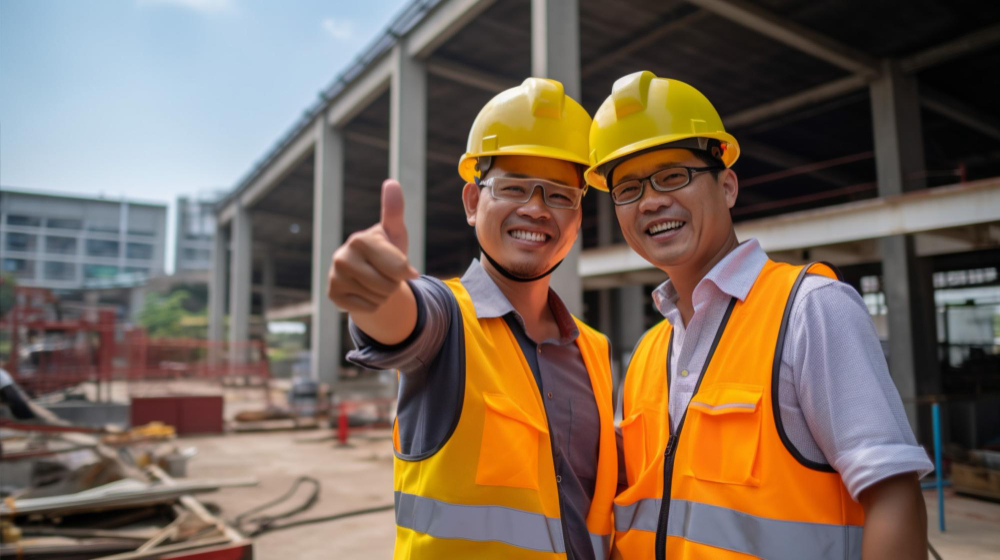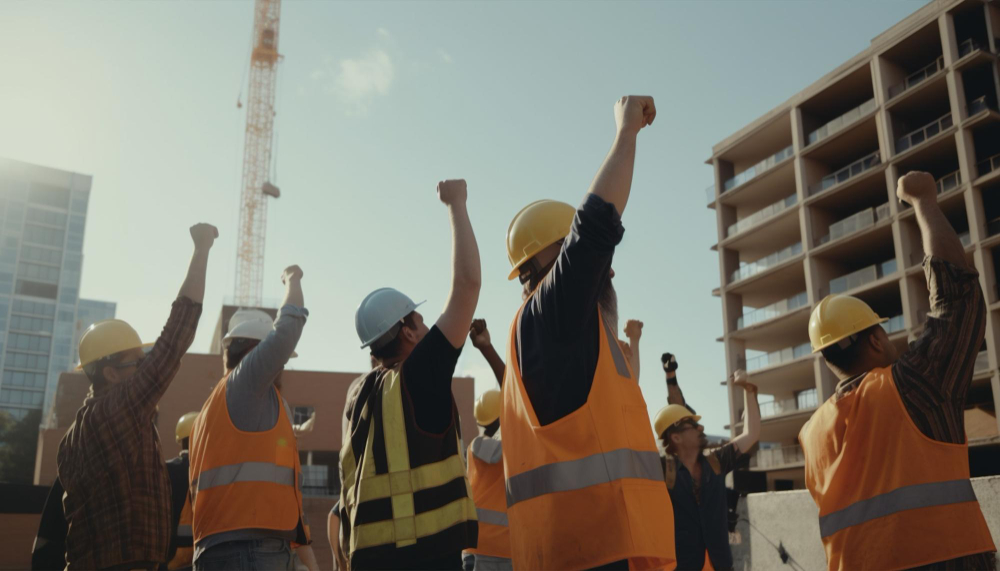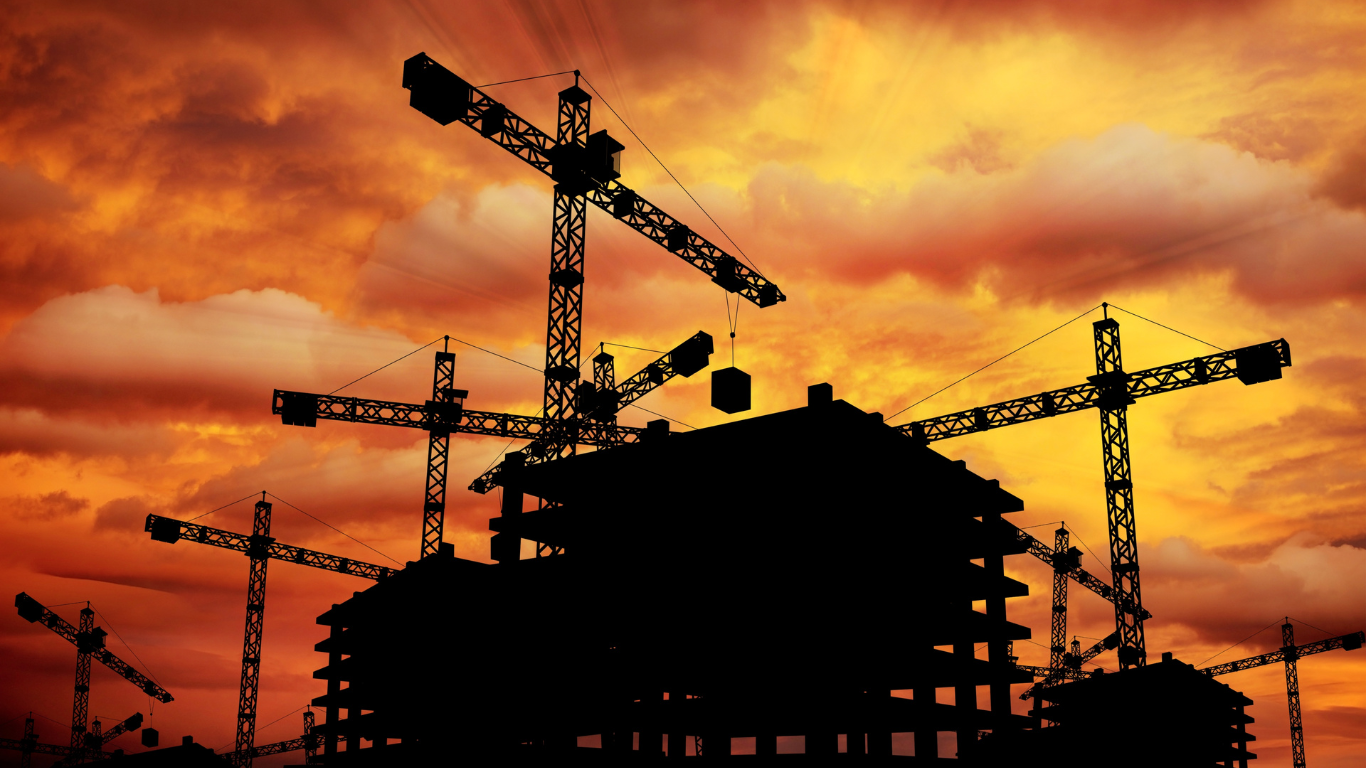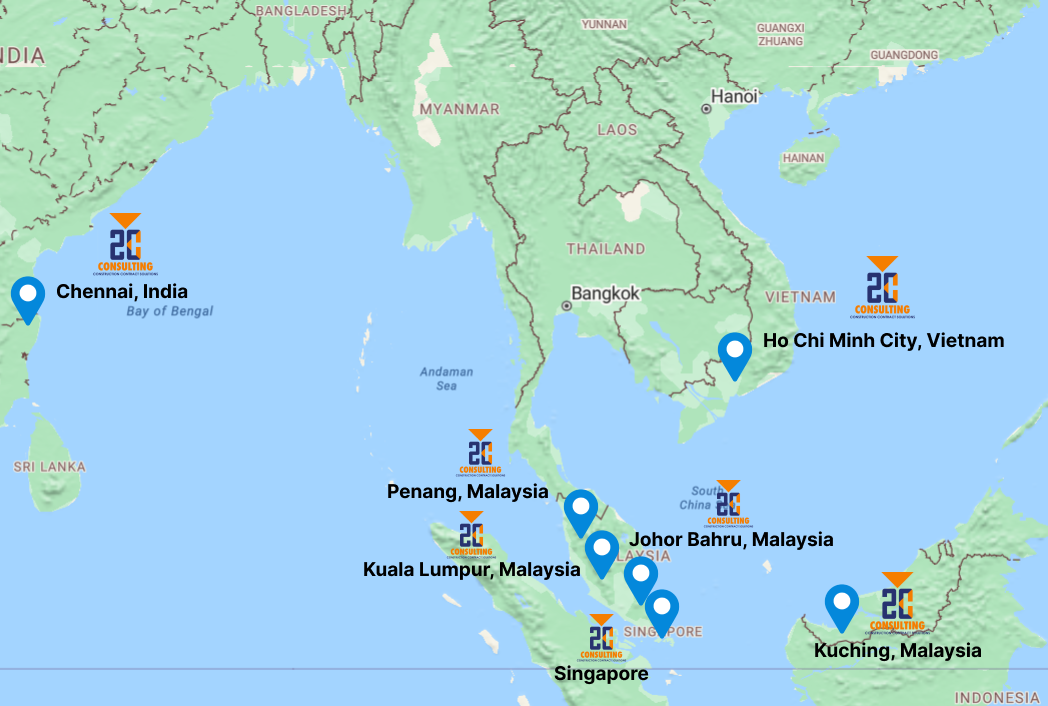Unlock Success
with 2C Consulting
Your Partner in Construction Success. Expert Dispute Resolution, Contract Consultation, and Strategic Claim Execution at Every Stage.

Professional Construction Contract Solutions
and Dispute Resolution
At 2C Consulting, we cover the full spectrum of the contract administration stage, from inception to handover, providing the best bespoke strategic legal solutions, at any stage throughout a project’s lifecycle.
Founded by Shaun Kumar, a quantity surveyor with over 30 years of experience within the construction, development and engineering sector, 2C Consulting is built on the triple pillars of professionalism, cooperation and transparency.
As well as leading the team, Shaun acts as a delay and disruption expert witness, and provides client representation in ADR (Alternative Dispute Resolution).

About Us
At 2C Consulting we provide honest, transparent and timely contract management and dispute resolution solutions to the construction, energy and oil & gas industry in Malaysia. Our team of quantity surveyors, delay analysts, quantum experts, as well as litigation support experts are committed to delivering solutions to your risk and contract management processes.
With construction disputes, 2C has built its service offerings around the precept that disputes are costly and need to be avoided. Once assigned to a contract, we are dedicated and committed to reaching a successful conclusion. Each of our clients can be confident in having the support and back up of a professional and efficient team.

Our Stance & Values
Trust
We are committed to providing quality, value for money and professional services to our clients through a team carefully selected for their knowledge, expertise and personal attributes so they become an extension of the clients’ team while engendering an atmosphere of trust, co-operation and transparency on every project.
Solutions Driven
Our services are client focused, providing complete commercial solutions for all aspects of the engineering and construction industry.

Our Services

Contract Solutions

Claims Solutions

Expert Solutions

Delay & Disruption Solutions
News

COVID-izing Your Construction Contract
INTRODUCTION
Those entering into new construction contracts should include custom language addressing the parties’ respective rights and responsibilities related to COVID-19. Many articles and webinars have focused on how traditional contract clauses in existing contracts may respond to COVID-19 issues. The fit is not always clear.
Some guesswork is involved and creativity is called upon as square pegs are coaxed into round holes. While there is a need to perform that retrospective analysis to assess how COVID-19 issues will play out under existing contracts, there is no need to propagate uncertainty in new contracts. Indeed, such uncertainty can cause parties to shy away from new contracts or include significant contingencies, neither of which supports an industry trying to recover from the pandemic.
Is there a need now in this prolonged COVID-19 pandemic to express conditions in these construction contracts and proceed with the projects with more clarity and mitigate the risks of the COVID-19 event?
This article addresses custom COVID-19 language for new construction contracts. The principles discussed can be applied to any construction contract. This article is based on two positions, one as a developer and the other as a contractor.
CLAUSES AND ISSUES
Definitions
Just like a building needs a solid foundation, new COVID-19 language in a contract should start with key definitions on which the parties’ rights and responsibilities will be built. Four terms to define upfront would be the COVID-19 event itself, COVID-19 Acts & Bills, specific COVID-19 Terms & Condition, and Unknown COVID-19 Conditions.
Everything ties back to COVID-19, so define that term first. Consider a definition that includes both the virus and the disease it causes, such as: “The 2019 novel coronavirus and the disease it causes are collectively referred to herein as COVID-19.”
Next, pick a term, such as COVID-19 Bills & Acts, to capture the orders, directives and guidance concerning COVID-19 that have been issued, and which may be issued, by the Government bodies with jurisdiction over the project. Those orders, directives and guidance may require the project to shut down or otherwise increase the contractor’s cost or time of performance by calling for things such as SOP Compliance, social distancing and the use of personal protective equipment. Having a term for that collection of orders, directives and guidance is helpful when allocating the parties’ rights and responsibilities pertaining to them.
Finally, define a set of related terms, COVID-19 Terms & Condition and Unknown COVID-19 Terms & Condition. Define a COVID-19 Condition as something attributable to COVID-19 not caused by the parties and beyond its control. The definition should list specific items, such as COVID-19 terms and supply chain disruptions due to COVID-19, and include a catchall, such as, “other circumstances concerning COVID-19 not caused by the parties and which are beyond its control.”
An Unknown COVID-19 Terms & Conditions adds a time component. Define it as a COVID-19 Condition the contractor did not know about, and reasonably should not have known about, as of a certain time, such as when the contract or a lump sum price is signed. Consider stating COVID 19 terms and conditions issued at least 10 days before a contract is signed are not an Unknown COVID-19 Condition. In other words, the contractor will be deemed to have knowledge of those COVID-19 Terms.
The nesting of the definitions, culminating in an Unknown COVID-19 Condition, is very important. As discussed in the following sections, in order to be entitled to any relief, the contractor must demonstrate an issue constitutes an Unknown COVID-19 Condition. This is based on the principle that if the contractor knew, or reasonably should have known, about the issue when it signed the contract, then it should have accounted for it in the price and schedule. Tying into that principle, if a COVID-19 Condition arises after the contractor submits its bid or proposal, it should be allowed to revise the same due to that condition up until the time it signs the contract. Language to that effect should be included in the contract and procurement documents accordingly.
Delay
In many construction contracts, one of the criteria for an excusable delay is it must be unforeseeable. Contractors may be concerned that in new contracts all delays related to COVID 19 will be deemed to be foreseeable because the parties were aware of the COVID-19 pandemic when they signed the contract. This is the type of uncertainty that can arise if standard clauses are not clarified. An equitable approach is to focus on the specific COVID-19 issue that caused the delay, rather than the pandemic as a whole. In that regard, clarifying language should be added to the contract stating, with respect to a COVID-19 Condition, only an Unknown COVID-19 Condition is deemed to be unforeseeable. That strikes a fair balance. If the contractor did not know about, and reasonably should not have known about, the COVID-19 Condition when it signed the contract, it will be deemed to be unforeseeable and something for which the contractor can pursue a time extension. The Developer is also protected because the contractor will not be able to seek a time extension based on a COVID-19 Condition it knew about, or reasonably should have known about, when it signed the contract or GMP amendment.
If the contractor is entitled to a time extension for an Unknown COVID-19 Condition, the next issue to address in the contract is whether that time extension is compensable. One approach is to treat this type of delay the same way the contract treats force majeure delay. For example, if the contract states only delays caused solely by the owner are compensable, then clarify that even if the contractor is entitled to a time extension due to an Unknown COVID-19 Condition, the time extension is non-compensable. On the flip side, if the contract affords the contractor compensation for force majeure delay, then clarify that if the contractor is entitled to a time extension due to an Unknown COVID-19 Condition, the time extension is compensable.
Directed Suspension
The Developer may want to suspend work at the project site due to COVID-19 health concerns even though the contractor is allowed to proceed with the work based on COVID-19 Terms. This may be more likely for sites partially occupied by the Developer during the course of construction. If the contract provides the owner the right to suspend the work for its convenience, then one approach is to add language that describes this type of a suspension and states it will be deemed to be a suspension for the owner’s convenience with the contractor having the corresponding remedies stated in the contract for such a suspension. If the contract does not allow the owner to suspend the work for reasons other than the contractor’s breach, then consider adding a new section specifically addressing the owner’s right to suspend work due to COVID-19 health concerns and the relief to which the contractor is entitled for that suspension.
Compliance with COVID-19 Bills & Acts
Include a section that states the contractor is required to comply with COVID-19 Bills & Acts in the performance of the work. This is true irrespective of when the COVID-19 Bills & Acts are issued. The timing of their issuance (before or after the contract is signed) will affect whether the contractor is entitled to an equitable adjustment for such compliance, but not whether compliance is required.
Another issue to address in this section is whether, and to what extent, the contractor should be responsible for its subcontractors and suppliers complying with COVID-19 Bills & Acts. At a minimum, it is fair for the contractor to be responsible for its subcontractors and suppliers complying with COVID-19 Bills & Acts while they are on the project site. However, should it also be responsible for them complying with COVID-19 Bills & Acts while they are off-site?
Consider a group of subcontractors who pool together and take a van to work in violation of applicable social distancing guidelines. One of those workers becomes infected with COVID-19 and comes to the site, resulting in a suspension of all site activity while a deep clean is performed. Should the contractor be responsible for that delay? How do we know if that conduct resulted in the worker becoming infected? How do we know that the site had not already been infected by others?
As a general principle, the contractor is responsible for the acts and omissions of its subcontractors and suppliers as it pertains to their performance of the work. Defective work is one example. Consider the van example above. However, instead of violating social distancing guidelines, the driver was pulled over for speeding and arrested, which resulted in a delay to the project because the workers never showed up at the site that day. Would the contractor be responsible for that delay resulting from off-site subcontractor conduct? A final example to consider is a contractor’s supplier whose factory is shut down because the workers in the factory were not following social distancing guidelines and became sick. The supplier is late in supplying the equipment the contractor ordered, which delays the project. Should the contractor be responsible for that delay because its supplier did not abide by COVID-19 Bills & Acts?
The extent to which the contractor should be responsible for its subcontractors’ and suppliers’ off-site compliance with COVID-19 Bills & Acts is an issue the owner and contractor may view very differently. Putting those differences aside, and even if one agreed in principle that the contractor should be responsible for such compliance, the impracticality of the contractor policing its subcontractors’ and suppliers’ off-site conduct may result in a significant increase to its price for that effort and risk. Therefore, the owner should perform a risk-reward analysis. The outcome might be that the price premium is not worth it. However, that issue may be resolved if addressed in the contract.
Wrestling with an issue upfront before the ink dries is better than first confronting it after the pages have curled with age.
Compensation for COVID-19 Costs
The last significant issue to address is the contractor’s right to be paid for COVID-19 costs, including, but not necessarily limited to, price escalation due to COVID-19 supply disruptions and the cost of complying with COVID-19 Bills & Acts. This critical language should strike a fair balance to achieve the twin goals of dissuading contractors from including excessive COVID-19 contingencies in their lump sum proposals, and encouraging developers to commit their funds to new projects.
First, identify the criteria for compensation. For example, the cost must: (i) be solely attributable to an Unknown COVID-19 Condition; (ii) be reasonable under the circumstances; (iii) not be the result of the contractor’s failure to comply with the contract documents or a COVID-19 Bills &
Act; and (iv) not be the result of a subcontractors’ or suppliers’ failure to comply with a COVID 19 Bill & Act while on site (and, as discusses above, perhaps while off-site as well). You can refer to a cost that satisfies those criteria as an Unknown COVID-19 Cost. Second, state the owner will reimburse the contractor for costs attributable to COVID-19, and which are not included in the schedule of values, only if the cost is an Unknown COVID-19 Cost. As with a time extension for delay, this strikes a fair balance and hinges on what the contractor knew, and reasonably should have known, at the time it signed the contract. Third, if your contract is based on a lump sum that includes a construction contingency, you might address whether that contingency will be the first source of funds for an Unknown COVID-19 Cost, with a change order to follow only if there is a shortfall.
Organization of New Language
You have two options concerning how you organize the new COVID-19 language. You can disperse it throughout the contract on a topical basis. For example, you can include the COVID 19 delay language in the delay section of the contract. Alternatively, you can add a new article to the contract for COVID-19 and include all of the new language there. The second option is preferred for a few reasons. First and foremost, it is easier to comprehend and apply the language when it is in one place. This is especially true due to the nesting of the definitions. Further, from a drafting and negotiating perspective, it is more efficient to add the language in a new article, and it is easier to edit and pass drafts back and forth when the language is in one place. If your contract includes separate documents for the agreement and general conditions, include the new COVID
19 article in the document that has the higher priority in the order of precedence clause. CONCLUSION
Owners and contractors should include new language in their construction contracts specifically addressing their rights and responsibilities concerning COVID-19. Doing so is a better option than wondering how standard clauses might apply to the pandemic. The greater certainty created by COVID-19 contract language should reduce upfront pricing and schedule contingencies to the benefit of developers, and encourage the letting of new projects to the benefit of contractors.
Shaun Kumar is the Principal of 2C Consulting, a construction claims consultancy.
Get In Touch
Please fill in the form to contact us directly.

